Related Research Articles
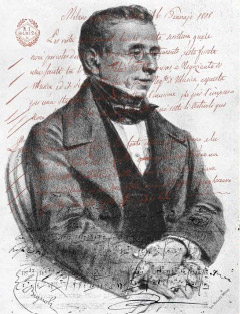
Casa Ricordi is a publisher of primarily classical music and opera. Its classical repertoire represents one of the important sources in the world through its publishing of the work of the major 19th-century Italian composers such as Gioachino Rossini, Gaetano Donizetti, Vincenzo Bellini, Giuseppe Verdi, and, later in the century, Giacomo Puccini, composers with whom one or another of the Ricordi family came into close contact.

Gianluigi Gelmetti OMRI, was an Italian-Monégasque conductor and composer.
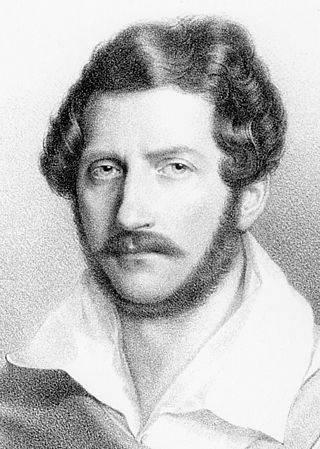
Gianni di Parigi is an 1839 melodramma comico in two acts with music by Gaetano Donizetti to a libretto by Felice Romani, which had previously been set by Francesco Morlacchi in 1818 and by Giovanni Antonio Speranza in 1836.

Lorenzo Ferrero is an Italian composer, librettist, author, and book editor. He started composing at an early age and has written over a hundred compositions thus far, including twelve operas, three ballets, and numerous orchestral, chamber music, solo instrumental, and vocal works. His musical idiom is characterized by eclecticism, stylistic versatility, and a neo-tonal language.

Giovanni Ricordi was an Italian violinist and the founder of the classical music publishing company Casa Ricordi. The musicologist Philip Gossett described him as "a genius and positive force in the history of Italian opera".
Orfeo (Orpheus) is an opera in three acts, a prologue and an epilogue by the Italian composer Luigi Rossi. The libretto, by Francesco Buti, is based on the myth of Orpheus and Eurydice. Orfeo premiered at the Théâtre du Palais-Royal in Paris on 2 March 1647. It was one of the earliest operas to be staged in France.
La Lodoiska is an opera in three acts by Simon Mayr to an Italian libretto by Francesco Gonella De Ferrari. It was Mayr's second opera and premiered at La Fenice in Venice on 26 January 1796.

La cena delle beffe is an opera in four acts composed by Umberto Giordano to an Italian libretto by Sem Benelli adapted from his 1909 play of the same name. The opera premiered on 20 December 1924 at La Scala. Milan. The story, set in Florence at the time of Lorenzo de' Medici, recounts the rivalry between Giannetto Malespini and Neri Chiaramantesi for the affections of the beautiful Ginevra and Giannetto's thirst for revenge over a cruel joke played on him by Neri and his brother Gabriello. Giannetto's revenge "joke" ultimately leads Neri to murder both Ginevra and his own brother. The opera ends with Neri's descent into madness.

The Casa di Riposo per Musicisti is a home for retired opera singers and musicians in Milan, northern Italy, founded by the Italian composer Giuseppe Verdi in 1896. The building was designed in the neo-Gothic style by Italian architect, Camillo Boito. Both Verdi and his wife, Giuseppina Strepponi are buried there. A documentary film about life in the Casa di Riposo, Il Bacio di Tosca, was made in 1984 by the Swiss director Daniel Schmid.
Marco Betta is an Italian composer.
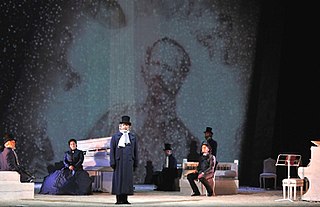
Risorgimento! is an opera in one act by Lorenzo Ferrero set to an Italian-language libretto by Dario Oliveri, based on a scenario by the composer. It was completed in 2010 and first performed at the Teatro Comunale Modena on 26 March 2011.
Mare nostro is a comic opera in two acts composed by Lorenzo Ferrero to an Italian-language libretto by Marco Ravasini, loosely based on Vittorio Alfieri's 1804 comedy L'antidoto . The work was completed in 1985 and first performed at the Teatro Comunale, Alessandria on 11 September 1985.
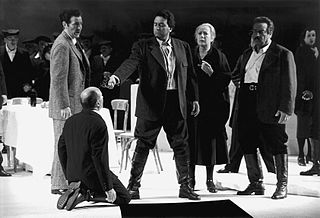
Salvatore Giuliano is an opera in one act by Lorenzo Ferrero to an Italian-language libretto by Giuseppe Di Leva, which was conceived to be performed in tandem with Pietro Mascagni's Cavalleria rusticana. The work was commissioned by the Teatro dell'Opera di Roma and premiered there on 25 January 1986.
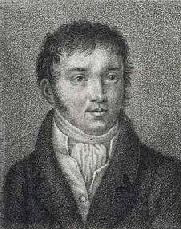
Alessandro Sanquirico was an Italian scenic designer, architect, and painter. He began his career in conjunction with leading artists of the time such as Paolo Landriani, Giovanni Pedroni, Giovanni Perego, and Georgio Fuentes. Additionally, he studied architecture and perspective with Giuseppe Piermarini, the architect of the La Scala opera house.
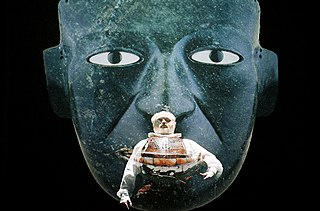
La Conquista is an opera in two acts by Lorenzo Ferrero set to a trilingual libretto by the composer and Frances Karttunen, based on a concept by Alessandro Baricco. It depicts the major episodes of the Spanish conquest of the Aztec Empire in 1521 and the subsequent destruction of the Aztec civilization. The libretto (English-Spanish-Nahuatl) is a blend of historical and literary sources drawn from transcriptions of indigenous and European literature, both kept, with some exceptions, in their original languages. The texts are taken from The Truthful History of the Conquest of New Spain by Bernal Díaz del Castillo, the Book XII of the Florentine Codex, the works of Juan Boscán Almogáver, Bernardino de Sahagún, Lope de Vega, Heinrich Heine, and from Aztec prayers, songs and poems as collected in Cantares Mexicanos and Romances de los señores de Nueva España.
Charlotte Corday is an opera in three acts by Lorenzo Ferrero to an Italian-language libretto by Giuseppe Di Leva, written on commission from the Teatro dell'Opera di Roma for the 200th anniversary of the French Revolution which was commemorated in 1989.
La figlia del mago is a children's opera in two acts by Lorenzo Ferrero set to an Italian-language libretto by Marco Ravasini. It was completed in 1981 and subtitled giocodramma melodioso, a wordplay on melodramma giocoso. The libretto, inspired by Mario Lavagetto's 1979 book Quei più modesti romanzi: il libretto nel melodramma di Verdi, is written in an imaginary language which emphasises the element of play. The music is a sequence of closed numbers "which spoof the most common operatic conventions." The aim of the opera is to show children how Italian opera functions. Alongside professional singers, children take mime roles.

Flora mirabilis is an opera in three acts composed by Spyros Samaras to an Italian-language libretto by Ferdinando Fontana. Described in the libretto as a Legenda ("Legend"), the opera is an allegorical fairy tale set in medieval Sweden. It premiered at the Teatro Carcano in Milan on 16 May 1886 and was performed again the following year at La Scala. Flora mirabilis was Samara's first opera to be performed outside his native Greece and proved to be his greatest success, playing in multiple opera houses in Italy and abroad.

The following outline is provided as an overview of and topical guide to Milan:
References
Notes
- ↑ Salvetti and Sità, La cultura dei musicisti italiani nel Novecento, p. 202
- ↑ Gelli, Dizionario dell'Opera 2008, p. 808
- ↑ Salzman and Desi, The New Music Theatre, p. 195
- ↑ Osmond-Smith in The New Grove Dictionary of Opera, Vol. 3
- ↑ "Casa Ricordi catalogue".
- ↑ "Casa Ricordi catalogue".
Sources
- Anon. (1982–83). Lorenzo Ferrero "Marilyn"—Anmerkungen zur Oper. In Neuland: Ansätze zur Musik der Gegenwart, edited by Herbert Henck Vol. 3, pp 142–146. Bergisch Gladbach: Neuland Musikverlag Herbert Henck. ISBN 3-922875-04-1
- Bussotti, Sylvano (1982). I miei teatri. Palermo: Edizioni Novecento. ISBN 88-373-0027-1
- Enciclopedia della musica entry: Ferrero: Marilyn. Turin: UTET, 1996. ISBN 88-02-05381-2
- Fearn, Raymond (1998). Italian Opera since 1945. London: Routledge. ISBN 90-5755-001-6
- Fleuret, Maurice (1992). Chroniques pour la musique d'aujourd'hui. Arles: Éditions Bernard Coutaz. ISBN 2-87712-049-X
- Gelli, Piero, ed. (2007). Dizionario dell'Opera 2008, entries: Lorenzo Ferrero and Marilyn. Milano: Baldini Castoldi Dalai editore. ISBN 978-88-6073-184-5
- Gerhartz, Leo Karl (1983). Oper: Aspekte der Gattung. Laaber: Laaber-Verlag. ISBN 3-921518-63-6
- Girardi, Enrico (2000). Il teatro musicale italiano oggi: La generazione della post-avanguardia. Torino: De Sono-Paravia. ISBN 88-395-9129-X
- Henze, Hans Werner (1983). Die englische Katze: ein Arbeitstagebuch 1978-82. Frankfurt: Fischer Verlag. ISBN 3-10-032604-0
- Holden, Amanda, ed. (2001). The New Penguin Opera Guide. London: Penguin Books. ISBN 0-14-051475-9
- Killinger, Charles (2005). Culture and Customs of Italy. Westport, CT: Greenwood Press. ISBN 0-313-32489-1
- Lanza, Andrea (1980). Il secondo novecento. Torino: EDT Srl. ISBN 88-7063-115-X
- Larousse Dictionnaire de la musique entry: Lorenzo Ferrero. Paris: Larousse, 2005. ISBN 2-03-575040-7
- Moliterno, Gino, ed. (2000). Encyclopaedia of Contemporary Italian Culture. London and New York: Routledge. ISBN 0-415-14584-8
- Peyser, Joan, ed. (2006). The Orchestra: A Collection of 23 Essays on its Origins and Transformations. Milwaukee: Hal Leonard Publishing Corporation. ISBN 1-4234-1026-2
- Sadie, Stanley, ed. (1992-2002). The New Grove Dictionary of Opera . London: Macmillan Publishers. ISBN 0-19-522186-9
- Salvetti, Guido e Maria Grazia Sità, eds. (2003). La cultura dei musicisti Italiani nel Novecento. Milano: Edizioni Angelo Guerini e Associati SpA. ISBN 88-8335-510-5
- Salzman, Eric and Thomas Desi (2008). The New Music Theatre. Oxford and New York: Oxford University Press. ISBN 0-19-509936-2
- Schreiber, Ulrich (2005). Opernführer für Fortgeschrittene. Bärenreiter-Verlag. ISBN 3-7618-1437-2
- Webb, Michael D. (2008). Italian 20th Century Music: The Quest for Modernity. London: Kahn & Averill. ISBN 978-187108289-0